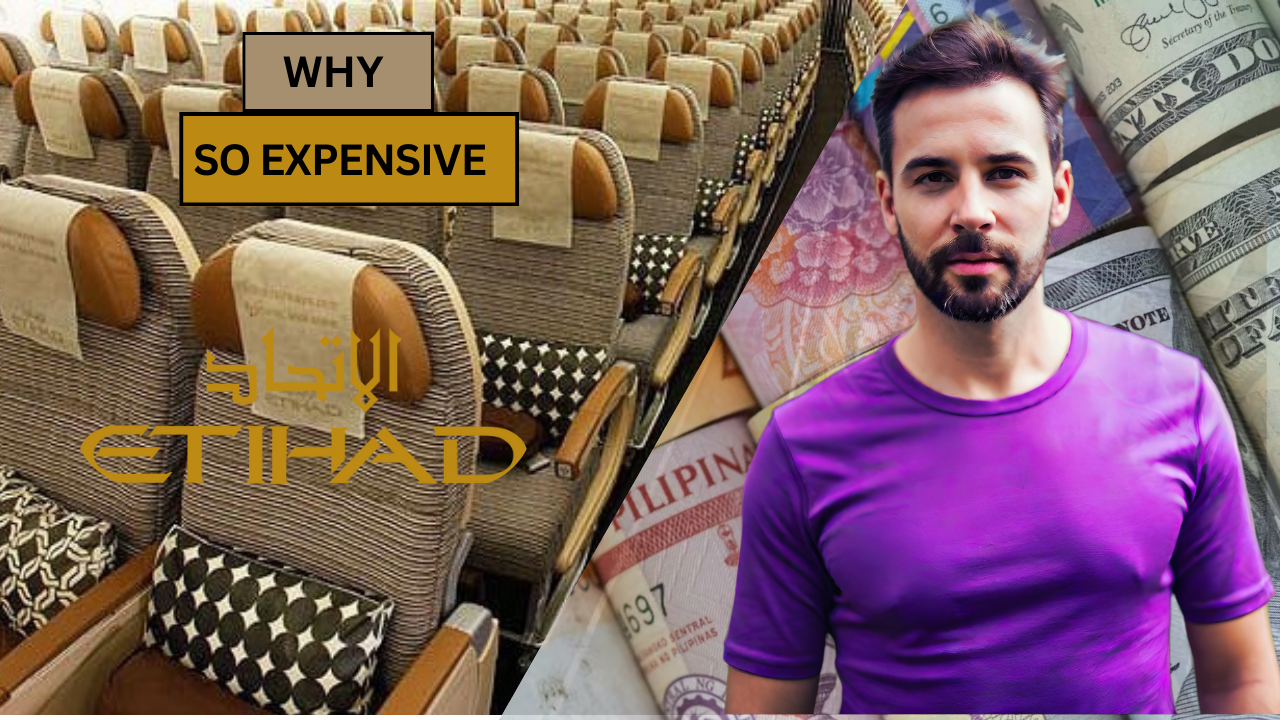if you’ve ever booked a flight, you’ve likely noticed that ticket prices can vary widely. A flight from Delhi to Mumbai might cost you around ₹5,000 in economy class, but have you ever wondered how expensive the most luxurious flight ticket could be? Etihad Airways offers a first-class seat called The Residence, which is more like a hotel room than a seat on an airplane. see this below Video
It features a queen-sized bed, a private bathroom, and even a separate sitting area. Available only on select routes, such as New York to Abu Dhabi, this 12.5-hour flight experience includes a personal butler and gourmet meals served as if you were dining in a five-star restaurnt. The cost? A staggering ₹5.5 million for a single flight. In this blog post we have to know about Airplanes Business Model.
On the flip side, the cheapest flight ticket in the world might shock you just as much. Ryanair, a European low-cost airline, offers tickets for as little as ₹800-₹1,500 on average. Considering the higher per capita income in Europe, this price is remarkably low. Imagine buying a flight ticket in India for ₹100-₹200!
These two airlines represent the extremes of the aviation industry, but which one do you think makes more profit? Surprisingly, it’s not the luxury-focused Etihad Airways but Ryanair. In 2022, Etihad recorded its highest-ever profit of $296 million, while Ryanair’s profit was a whopping $1.5 billion. How do low-cost airlines like Ryanair manage to out-earn their full-service counterparts? The answer lies in their business models and cost-cutting strategies.
The Two Types of Airline Business Model : Full-Service vs. Low-Cost
Airlines generally fall into two categories: Full-Service and Low-Cost. Full-Service airlines like Etihad Airways, Emirates, and Singapore Airlines offer in-flight meals, entertainment, and baggage check-in as part of the ticket price. In India, Air India and Vistara are examples of Full-Service airlines. Low-Cost airlines, on the other hand, offer cheaper tickets but with fewer amenities. In India, SpiceJet and IndiGo are examples of Low-Cost airlines, while internationally, Ryanair is a well-known name.
Low-Cost airlines often face criticism for their cost-cutting measures. For instance, Ryanair is notorious for charging extra for almost everything—baggage, seat selection, food, and even credit card payments during booking. Ryanair’s CEO, Michael O’Leary, once joked about charging passengers for using the toilet, highlighting the airline’s relentless focus on profit. Despite the backlash, this strategy has proven to be incredibly successful.
Also read Google Business Model
Dynamic Pricing: The Secret Behind Fluctuating Ticket Prices
Both Full-Service and Low-Cost airlines use a strategy called Dynamic Pricing. This means that ticket prices are not fixed but fluctuate based on various factors like demand, the day of the week, and even the time of booking. For example, airlines might divide 100 economy class seats into four categories, selling the first 25 seats at the lowest price and gradually increasing the price for the next set of seats as demand rises.
Many people believe outdated myths about booking tickets, such as the idea that booking months in advance or at midnight will get you the best deal. However, because of dynamic pricing, these strategies are only partially true. The key is understanding that prices change based on demand, not on the time of day or how far in advance you boook.
How Airlines Maximize Profits: The Rise of Premium Economy
It’s easy to assume that most of an airline’s profits come from business and first-class passengers, but this isn’t entirely true. Although first-class tickets can cost up to ₹5 million, the profit margin per square foot is often lower than you might expect. For example, economy class generates $270 per square foot, while first-class brings in $302. However, when you factor in the higher costs of first-class amenities like better food, more cabin crew, and luxurious ameniities, the profit margin is nearly the same as economy class.
Interestingly, the most profitable seating option is Premium Economy, where airlines make $322 per square foot. This has led many airlines to reduce or even eliminate first-class seating in favor of expanding their Premium Economy offerings.
Low-Cost Airlines: The Kings of Profitability
So, how do Low-Cost airlines like Ryanair manage to outpace Full-Service airlines in profitability? One way is by standardizing their fleets. Ryannair and SpiceJet, for example, only use Boeing 737 aircraft, which saves on maintenance and training costs. Additionally, these airlines minimize in-flight costs by offering fewer amenities, such as only serving water on short flights or replacing seat-back TVs with ads.
Ryanair also employs some unique strategies to cut costs further. Instead of using popular, expensive airports, they often operate from smaller, secondary airports that are cheaper to use. This allows them to offer lower ticket prices while maintaining profitability. Moreover, Ryanair focuses on shorter flights with quick turnaround times, allowing each plane to make multiple trips per day, further increasing revenue.
Tips for Getting the Cheapest Flight Tickets
If you’re looking to save money on your next flight, consider these strategies:
- Book on Weekdays: Flights on Tuesdays and Wednesdays are generally cheaper because they fall between peak travel times.
- Use Google Flights: Tools like Google Flights can help you find the cheapest dates to fly by showing you a price grid for different dates and routes.
- Consider Nearby Airports: Flying to or from a smaller, less popular airport can save you a significant amount of money.
- Opt for Stopover Flights: Sometimes, adding an extra leg to your journey can reduce the overall cost of your ticket.
- Try Different Websites: Don’t relly on just one booking site. Use multiple platforms like Kayak, Skyscanner, and Kiwi to find the best deals.
For Further Information read how-airlines-make-money-

